8 Best Grass Types for California
BY LAUREN BRYANT | MAY 25TH, 2023 | CALIFORNIA, LAWN CAREFrom Eureka to Palm Springs, homeowners all over California seek picturesque lawns to complement their landscaping. But what grass should you choose? While it depends on your specific region, some grass types do well in large portions of the state.
The best grass types for California will survive and thrive in local conditions. Let’s break down the pros and cons of each grass type, including which part of the state they can grow in.
In this article, we’ll cover:
- Cool-Season vs. Warm-Season Grasses
- 8 Best Cool-Season and Warm-Season Grasses for California
- Best Grass Types by Region
- FAQs About the Best Grass Types for California
- Choosing Grass and Plant Varieties for Your California Landscape
Cool-Season vs. Warm-Season Grasses
Grass types break down into two categories based on growth patterns: cool-season and warm-season. Cool-season grasses do best in the northern part of the United States, and warm-season grasses do best in the southern part. In the middle is the transition zone, where you can grow either type.
Since California is a large state, it spans the cool-season, transition, and warm-season zones. Cool-season grasses grow in northern, central, and coastal regions. Warm-season grasses grow in southern and central California.
While those in the far north or south of the state may be limited to either cool or warm-season grasses, most of California can grow either. Here are some critical differences between cool- and warm-season grasses to consider.
Cool-Season Grasses
- They grow best in spring and fall when temperatures are between 60 and 75 degrees Fahrenheit.
- Most of your lawn care will be in spring and fall.
- The grass will go dormant if air and soil temperatures consistently drop below freezing. They also may go dormant if the weather is hot and dry for too long.
- Grasses tend to be more cold-tolerant and less drought-tolerant.
- Plant or overseed this grass in fall or spring.
Warm-Season Grasses
- They grow best in summer when temperatures are between 80 and 90 degrees Fahrenheit.
- Most of your lawn care will be in spring and summer.
- The grass will go dormant if air and soil temperatures consistently drop below 50 to 55 degrees Fahrenheit.
- Grasses tend to be more drought-tolerant and less cold-tolerant.
- Plant or overseed this grass in late spring or early summer.
8 Best Cool-Season and Warm-Season Grasses for California
1. Bentgrass
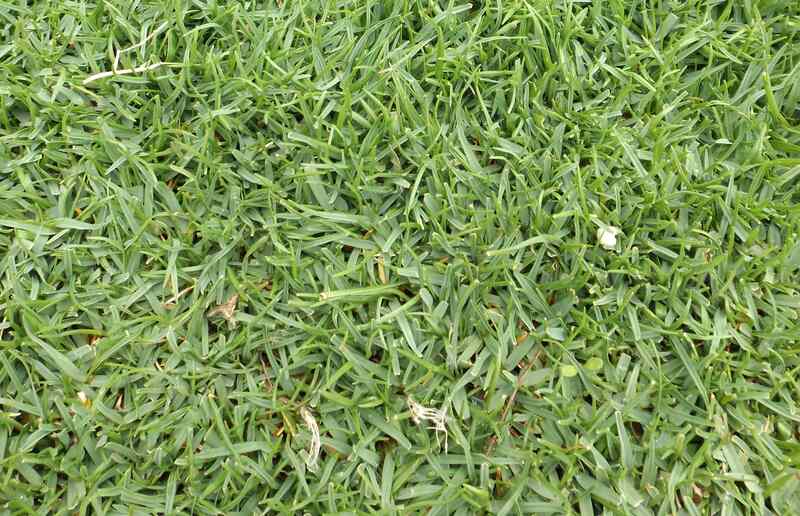
Photo Credit: Ruff tuff cream puff / Wikimedia Commons / CC0
There are multiple types of bentgrass available in California. Due to its high maintenance, creeping bentgrass is usually reserved for golf courses and lawn tennis courts. However, California native bentgrass is more suitable for home lawns. It has a medium texture, uniform growth pattern, and deep green color. It also is known as Agrostis pallens or seashore bentgrass.
California native bentgrass requires half the water of typical cool-season grasses. When faced with heavy foot traffic, its self-repairing rhizomes will heal damage. Plant it in full sun for the best growth. You can mow native bentgrass like a traditional lawn or grow it into a meadow. If you cut it back down after growing it out, gradually lower the mowing height to avoid damage.
Though California native bentgrass has many advantages, its slow growth may deter some people. Its seeds establish slowly, and sod is pricier than other cool-season grasses.
Classification: Cool-season grass
Spreads by: Rhizomes
Shade tolerance: Prefers full sun
Drought tolerance: High
Foot traffic tolerance: Moderate
Maintenance needs: Low; you can mow it or let it grow out
Recommended mowing height: 1.5-2 inches
Potential for disease: High
Soil pH: 5-8
Soil type: Any soil with good drainage
Other notes: This grass can be mowed or left long and meadow-like. It is best suited for coastal areas.
2. Kentucky Bluegrass
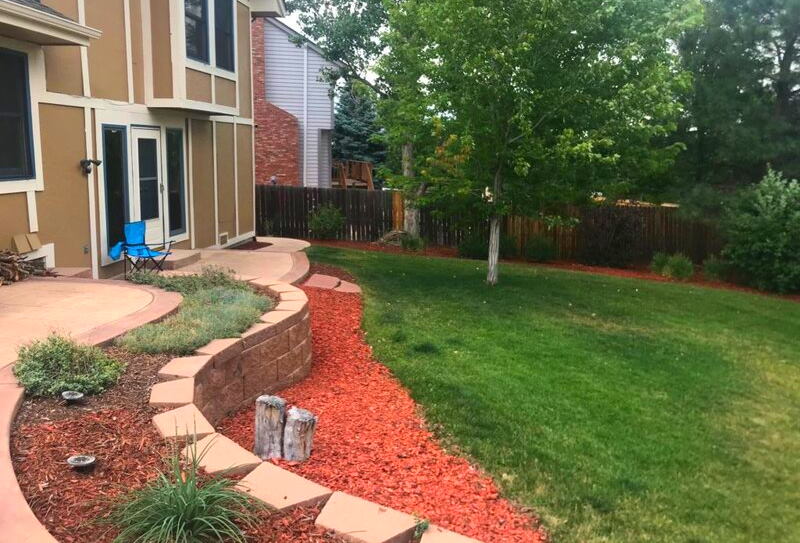
Photo Credit: Brenda Ryan / Wikilawn
This state may not be Kentucky, but this grass can still grow well in Northern and Central California. Kentucky bluegrass is deep green with a medium texture. It creates a dense turf.
This grass type grows well from fall through spring and needs moderate maintenance. It has an excellent cold tolerance, which makes it suitable for the intermountain west. Plant it in yards with full sun or some shade. Though Kentucky bluegrass is vulnerable to traffic damage, it will self-repair.
Summer is the slowest growing season for this grass. It will survive droughts by going dormant but become vulnerable to weeds and diseases if stressed by heat, dehydration, and poor soil quality. Kentucky bluegrass is often mixed with at least 15% perennial ryegrass to improve its performance.
Classification: Cool-season grass
Spreads by: Rhizomes
Shade tolerance: Low to moderate — prefers full sun
Drought tolerance: Moderate, but will survive by going dormant
Foot traffic tolerance: Low to moderate, but recuperates well
Maintenance needs: Moderate mowing frequency; a high-maintenance grass
Recommended mowing height: 2-3 inches
Potential for disease: Moderate to high
Soil pH: 6-7
Soil type: Good drainage, fertile
Other notes: Produces a dense lawn under ideal conditions; many of these traits (shade tolerance, drought resistance, etc.) vary widely by cultivar, with newer cultivars generally being hardier, more resistant to disease, etc.; mow taller in summer; most often mixed with other species, such as tall fescue, in home lawns
3. Perennial Ryegrass

Photo Credit: Dr Mary Gillham Archive Project / Flickr / CC BY 2.0
Rich green and fine-textured perennial ryegrass is commonly mixed with other turfgrasses but also can be used on its own. It’s primarily found in Northern and Central California, with some viability in Southern California. It does exceptionally well in the moderate temperatures of coastal California.
This grass type is moderate to high maintenance, depending on your desired mowing height. Due to its quick germination, perennial ryegrass is competitive against weeds and tolerates traffic well. You can plant it in full sun or partial shade. Since it is a cool-season grass, it has an excellent cold tolerance.
Some people use perennial ryegrass to improve the performance of Kentucky bluegrass lawns or preserve the color of bermudagrass lawns in winter. However, perennial ryegrass’ competitive growth could lead to it overpowering other grass types. It has a low tolerance for shade, heat, and drought.
Classification: Cool-season grass
Spreads by: Bunch-type grass
Shade tolerance: Low — prefers full sun
Drought tolerance: Low (may go dormant in summer)
Foot traffic tolerance: High, but poor recuperative ability
Maintenance needs: Moderate mowing requirement, depending on cutting height (lower cutting heights require more frequent mowing)
Recommended mowing height: 2-3 inches
Potential for disease: High
Soil pH: 6-7
Soil type: Fertile with good drainage
Other notes: Most often mixed with Kentucky bluegrass in a cool-season mix; well known for its excellent striping ability, low mowing tolerance (reel mower fans, this one’s for you), and rapid germination rate (four to seven days). It needs moderate levels of fertilizer.
4. Tall Fescue
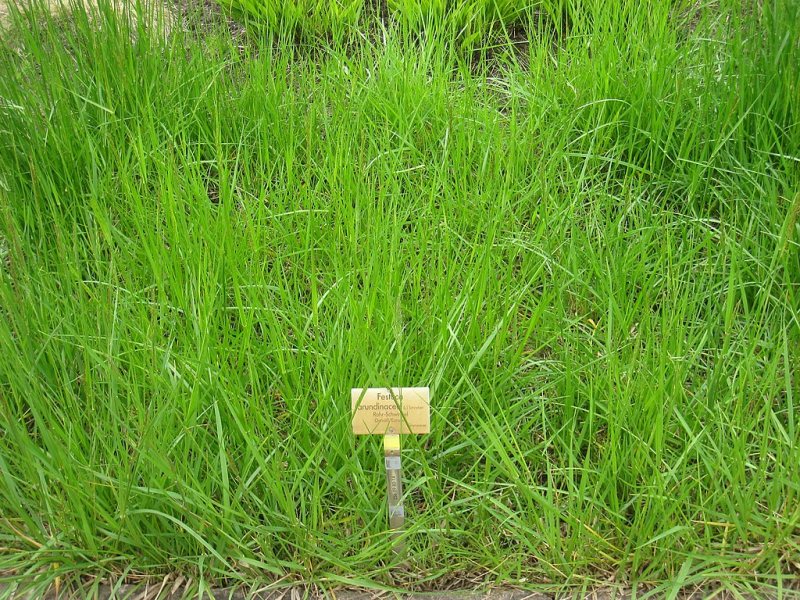
Photo Credit: Daderot / Wikimedia Commons / Public domain
This grass is the most common turfgrass in the state. It has a coarse texture, but the turf-type and dwarf-type tall fescue varieties have a finer texture and shorter height.
Tall fescue has a relatively good heat and drought tolerance for cool-season grass. It stays green in warm and cool weather but may turn brown in severe cold. Sunny or partially sunny yards are ideal for growth. When densely sown, this grass will have a uniform texture and strong resistance to diseases and weeds.
Though it can handle moderate traffic, it won’t fill in damaged patches due to its bunch-type growth habit. Reseed the lawn if you see thinning or bare spots. Tall fescue doesn’t grow well in high altitudes, so don’t use it if you live in the mountains.
Classification: Cool-season grass
Spreads by: Bunch-type grass
Shade tolerance: Moderate
Drought tolerance: Moderate
Foot traffic tolerance: Moderate, but low ability to recuperate from wear
Maintenance needs: Fast rate of growth, so plan to mow often
Recommended mowing height: 2-4 inches (many tall fescue lawns grow best when they’re mowed on the tall side); do not mow less than 1.5 inches
Potential for disease: Low to moderate under proper management conditions
Soil pH: 5.5-6.5
Soil type: Fertile, good drainage, but will tolerate a wider range of soil conditions
Other notes: Reseed every few years to repair bare spots and thinning; don’t plant old varieties such as Kentucky-31; look for “turf-type” tall fescue (TTTF). Seed blends with more than one TTTF cultivar give the best chance for a strong lawn.
5. Bermudagrass
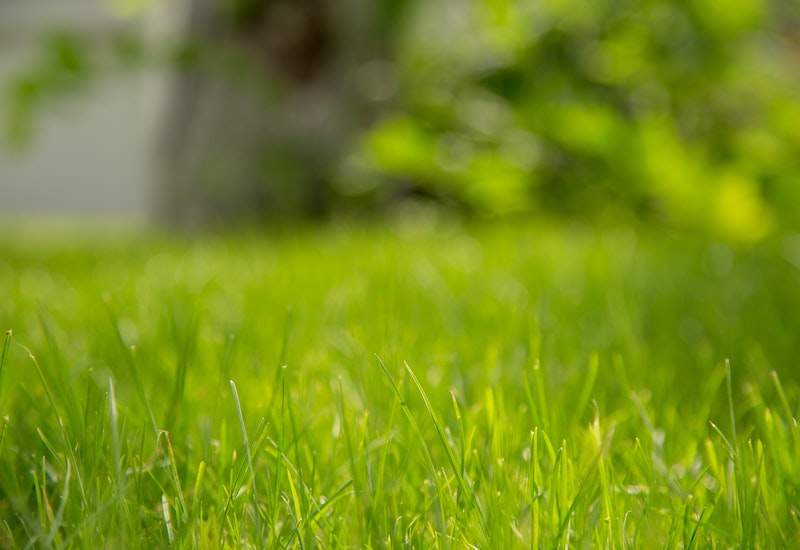
Photo Credit: Pexels
Depending on the variety, bermudagrass ranges from gray-green to blue-green to dark green, with a fine to medium texture. It loves the warm weather of Southern California and the Central California coast.
Bermudagrass is prepared to handle full sun, high temperatures, and drought. It’s an excellent choice for coastal properties due to its salinity tolerance. Due to its resilience to foot traffic, this grass is popular with families and pet owners. Its fast-growing nature allows it to withstand diseases and pests.
Cold and shade will weaken this grass and leave it vulnerable to weeds and traffic damage. Long periods of cold weather will leave it brown, which makes it less suitable for Northern California. It also may pose problems in its active growth period. Many varieties require frequent mowing, fertilization, and dethatching. Without edging, it could spread to nearby gardens or yards.
Classification: Warm-season grass
Spreads by: Stolons and rhizomes
Shade tolerance: Poor — needs full sun
Drought tolerance: High
Foot traffic tolerance: High
Maintenance needs: Needs frequent mowing due to fast growth rate; develops thatch easily; needs regular fertilization
Recommended mowing height: 1-2 inches
Potential for disease: Good resistance to disease, although diseases like spring dead spot are common; low resistance to insects like bermudagrass mites, dichondra flea beetles, and fiery skippers
Soil pH: 6-6.5
Soil type: Tolerates most soil types
Other notes: Bermuda spreads aggressively via its stolons (above-ground stems) and rhizomes (below-ground stems) and can out-compete many weeds. The downside is that it also can be a nuisance and is sometimes considered invasive. You’ll often find it has tunneled underground into flower beds and spread into neighboring lawns.
6. Buffalograss
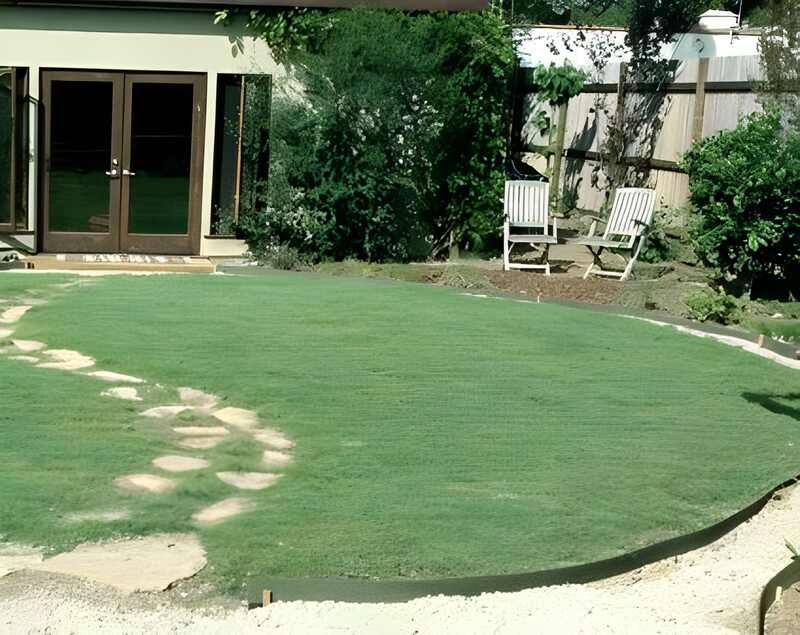
Photo Credit: Susan Harris / Flickr / CC BY 2.0
This grass type has a fine texture and grayish-green color. Buffalograss is native to North American Plains but can do well in California. Researchers at UC Davis and UC Riverside developed the UC Verde variety to suit this state’s hot, dry summers.
UC Verde buffalograss is very low-maintenance with good resistance to diseases and pests. It requires at least 50% less water than tall fescue and bermudagrass. You can mow as often as once a week or as infrequently as once a year, depending on how manicured or natural you want it to look. UC Verde is allergy-friendly due to the low number of seedheads produced.
Buffalograss won’t die if you walk over it sometimes or hold the occasional backyard event, but it’s not a good choice if you expect lots of activity on your lawn. It’s also not suited for shady yards. Buffalograss may turn brown and dormant in winter and in summer drought but will recover well. Expect to pay a higher-than-average price whether you buy seed or sod.
Classification: Warm-season grass
Spreads by: Stolons
Shade tolerance: Very low — best suited for full sun
Drought tolerance: High
Foot traffic tolerance: Very low, but light use or rare heavy use is OK
Maintenance needs: Low mowing frequency — once per week or less
Recommended mowing height: 2-4 inches or leave unmowed; UC Verde doesn’t grow taller than 4-6 inches
Potential for disease: Good tolerance against diseases and insects
Soil pH: 6.5-7.5
Soil type: Prefers soils that aren’t sandy
Other notes: Buffalograss often turns brown in winter. Because of its few flowerheads, it produces little pollen and seeds, making it suitable for those with allergies.
7. St. Augustinegrass
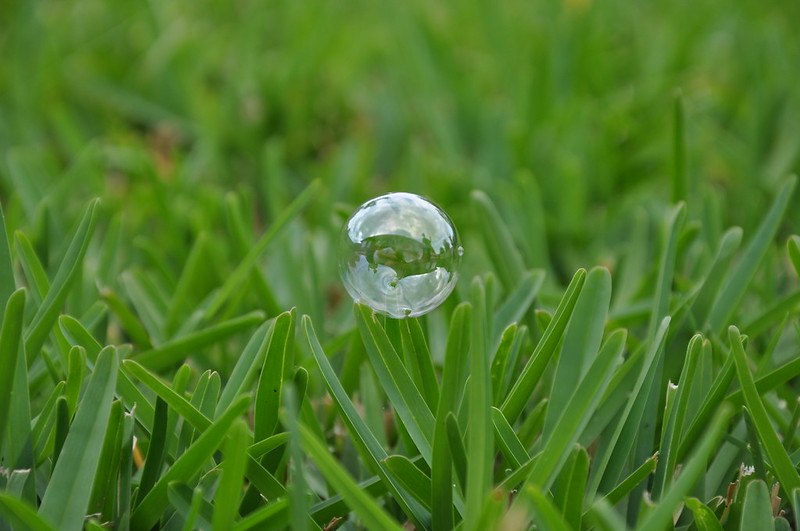
Photo Credit: Jay Morgan / Flickr / CC BY-ND 2.0
If you live on the SoCal coast or in the coastal valleys, consider St. Augustinegrass. It produces a dense lawn with broad leaves and a medium green color.
This grass has few weeds and pest problems. It also can handle drought and salinity. St. Augustinegrass thrives in moderate temperatures and grows most in summer, with slow growth in spring and fall and dormancy in winter. It is one of the best warm-season grasses for shady yards but will do best in full sun.
St. Augustinegrass isn’t ideal for the cold northernmost regions of California. It requires frequent mowing, fertilization, and dethatching to keep it healthy. This grass is better for decorative lawns than high-use ones due to low traffic tolerance.
Classification: Warm-season grass
Spreads by: Stolons
Shade tolerance: Moderate shade tolerance, among the highest of any warm-season grass; some cultivars are more shade tolerant than others
Drought tolerance: Moderate
Foot traffic tolerance: Moderate
Maintenance needs: Moderate to high mowing frequency
Recommended mowing height: 2.5-4 inches (mow dwarf varieties from 2.5-3 inches; standard cultivars from 3-4 inches; mow tall in shade)
Potential for disease: Moderate to high; watch out for iron deficiency, fiery skippers, and Southern chinch bugs
Soil pH: 6-7.5
Soil type: Tolerates many soil types; prefers moderately fertile and moist (not waterlogged) soils; not a highly drought-tolerant grass; doesn’t tolerate soil compaction
Other notes: Native to coastal areas across the world and prefers moist soils and mild winters; will thrive in more inland areas provided growing conditions are met; good salt tolerance; will go dormant during winter in all but the southernmost regions
8. Zoysiagrass
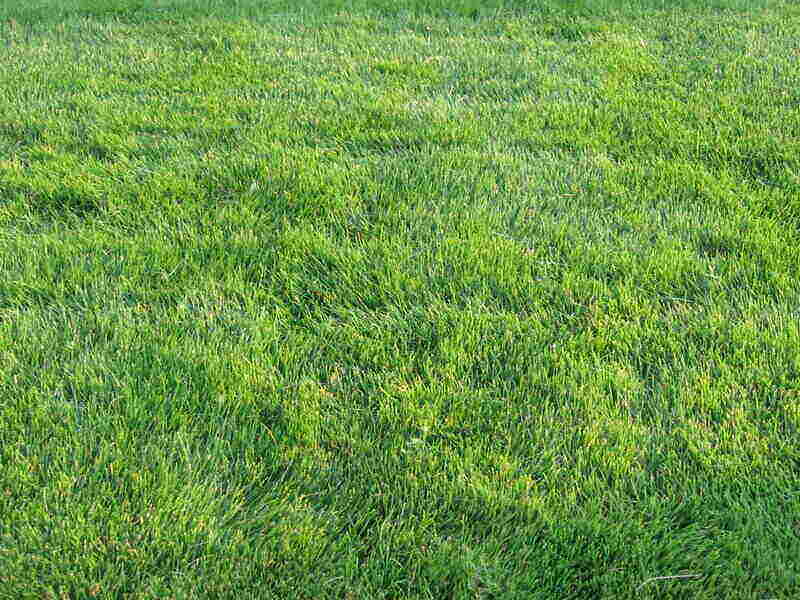
Photo Credit: Russbach at the English Wikipedia / Wikimedia Commons / CC BY-SA 3.0
Zoysiagrass creates dense, uniform, prickly turf. It has a medium to fine texture and dark green color. It does well in Southern California and the coasts of Central and Northern California.
This low-maintenance has few pest problems and resists drought, heat, and foot traffic. The most drought-tolerant variety is Zoysia japonica. Though Zoysiagrass needs little fertilizer, fall fertilization can improve its typically brown winter color. Plant it in full sun or partial shade.
Zoysiagrass establishes slowly, but the “DeAnza,” “El Toro,” “Emerald,” and “Victoria” varieties establish quicker. Use sod instead of plugs if you want an instant lawn. This grass type requires moderate mowing to avoid scalping. Dethatch yearly to avoid matting. A thatch-filled Zoysiagrass lawn will be challenging to mow evenly.
Classification: Warm-season grass
Spreads by: Stolons and rhizomes
Shade tolerance: Tolerates light to moderate shade
Drought tolerance: High
Foot traffic tolerance: High
Maintenance needs: Low to moderate nitrogen requirement; moderate mowing frequency
Recommended mowing height: 1-2.5 inches
Potential for disease: Not prone to disease and insects; good disease tolerance overall; watch out for nematodes
Soil pH: 6-6.5
Soil type: Well-draining; some cultivars more tolerant of a wide range of soils than others
Other notes: Moderately salt tolerant; cut with sharp mower blade; mow taller if the grass is in partial shade
Best Grass Types by Region
California not only has a diverse culture but a diverse climate. You can narrow your turfgrass choices by general regions, such as Northern, Central, and Southern.
The grass types listed under each region will work in most of that area. However, it doesn’t necessarily mean every city will be well-suited for those grass types or that you can’t use other grass types. For example, you will still need to consider whether you live by the ocean, inland, or in the mountains, as growing conditions will vary greatly.
Northern California
- Bentgrass
- Kentucky bluegrass
- Perennial ryegrass
- Tall fescue
Central California
- Perennial ryegrass
- Zoysiagrass
Southern California
- Bentgrass
- Tall fescue
- Bermudagrass
- Buffalograss
- St. Augustinegrass
- Zoysiagrass
FAQs About the Best Grass Types for California
Seashore bentgrass, Kentucky bluegrass, and tall fescue can stay green all year in California. These grasses may need irrigation to maintain their color year-round. Severe temperatures and drought also may cause lawns to turn brown and dormant.
The most heat-tolerant grass types in California include tall fescue, Zoysiagrass, bermudagrass, and buffalograss. Keep in mind that heat tolerance does not always equal drought tolerance. Just because a lawn can handle a heat wave doesn’t mean it won’t want water.
If you don’t want to spend all your time mowing, fertilizing, and irrigating your lawn, consider seashore bentgrass, UC Verde buffalograss, or Zoysiagrass.
The most drought-tolerant grass types in California are bentgrass, bermudagrass, buffalograss, and Zoysiagrass.
Choosing Grass and Plant Varieties for Your California Landscape
Turfgrasses and other plants do best when they’re well-adapted to the area. California native plants are more likely to be low-maintenance and fire-resistant than non-native plants. That said, non-native plants can still be adapted to the California climate and suit your needs.
Even when broken down into Northern, Southern, and Central, California has many climates and soil types. Your property may face unique challenges that make landscaping by yourself difficult or time-consuming.
A local lawn care or landscaping professional can take yard chores off your to-do list and provide grass and plant recommendations based on your unique needs. Wikilawn can connect you with pros in Los Angeles, San Jose, Bakersfield, and many other California cities.
Main Photo Credit: Sonoma Plaza / Carlton A. Lear / Wikimedia Commons / CC BY-SA 4.0